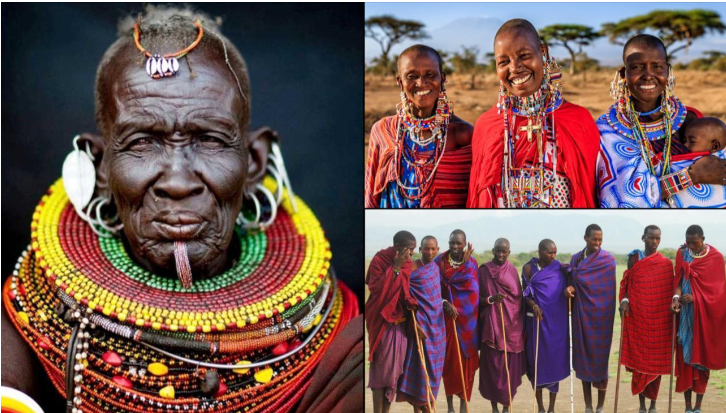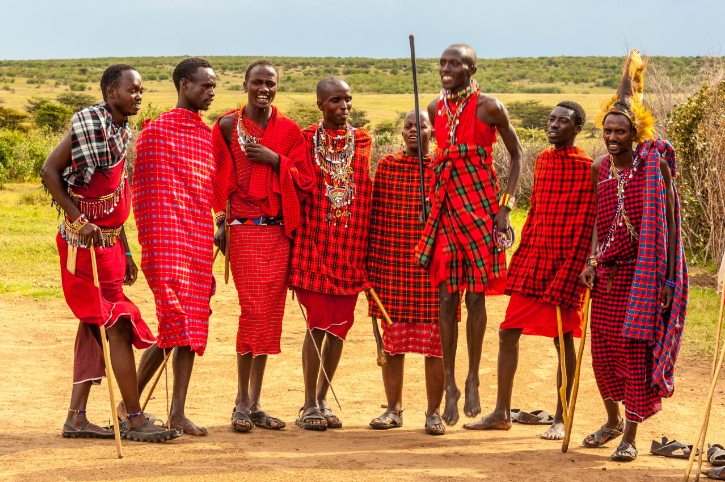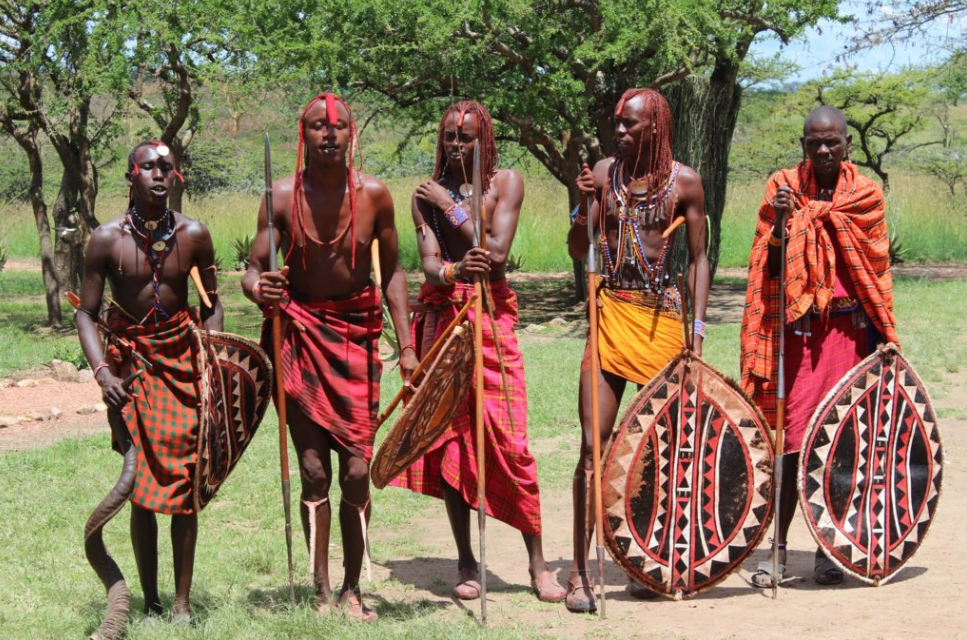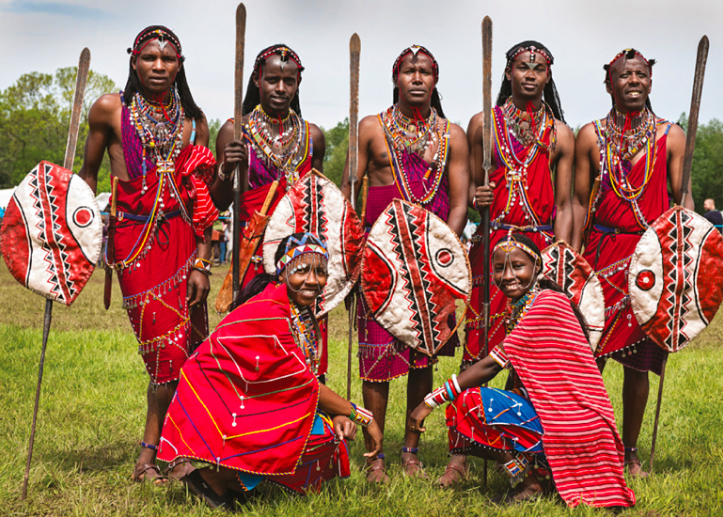The Maasai tribe is one of the most iconic and recognized groups in East Africa, known for their vibrant culture, rich history, and strong connection to the land. When you visit the Masai Mara with The Mara Wanderlust, you’ll have the chance to experience firsthand the traditions that have been passed down through generations. This article will give you an overview of the Maasai people’s history, cultural practices, and unique traditions, giving you a deeper appreciation of their way of life before your trip. Get ready to explore the heart of Maasai culture!
Historical Background of the Maasai Tribe
The Maasai tribe has a rich and storied history that dates back thousands of years, rooted in migration and resilience. Their journey through East Africa and deep connection to the Great Rift Valley has shaped their way of life to this day.
Origins of the Maasai People

The Maasai people are part of the Nilotic ethnic group, whose ancestors migrated from the Nile Valley to East Africa thousands of years ago. Their migration brought them through present-day South Sudan into Kenya and Tanzania, where they eventually settled in the Great Rift Valley region.
The Nilotic Migration and Settlement in East Africa
The Maasai migration was part of a larger movement of Nilotic peoples, who brought with them a pastoralist way of life centered around cattle herding. As they moved southward, the Maasai established themselves as fierce warriors and expert herders, thriving in the expansive plains of the Masai Mara and Serengeti.
The Maasai’s Relation to the Great Rift Valley Region
The Great Rift Valley is not only the geographical home of the Maasai but also holds cultural and spiritual significance. The Maasai view the land as a gift from their god, Enkai, and their lifestyle has been intricately linked to the natural environment. The open savannas and semi-arid plains provide the ideal setting for their nomadic, cattle-rearing lifestyle.
Key Historical Events That Shaped the Maasai
Over the centuries, the Maasai encountered challenges, including territorial conflicts with neighboring tribes, British colonization, and the creation of wildlife conservation areas. The loss of large portions of their land to colonial powers and national parks in the 19th and 20th centuries drastically altered their way of life. Despite these challenges, the Maasai have preserved much of their cultural heritage and continue to practice many of their ancient traditions.
The Maasai’s Adaptation to Modern Changes Over Time
In recent decades, the Maasai have adapted to modern influences while maintaining their cultural identity. Education, modernization, and economic pressures have led many to settle in permanent villages and diversify their sources of income, including tourism and traditional crafts. Despite these changes, the Maasai remain a resilient community, balancing tradition with change.
With The Mara Wanderlust, you’ll have the chance to explore the rich history of the Maasai and see how they’ve maintained their heritage while navigating modern challenges.
Cultural Practices of the Maasai

The Maasai are known for their unique and vibrant culture, which has been passed down through generations. From their language and social roles to their distinctive attire and traditional dances, their customs are deeply embedded in every aspect of daily life.
Language and Communication
The Maasai primarily speak the Maa language, which serves as a cornerstone of their cultural identity. Maa is not only a means of communication but also a way to preserve their heritage and oral traditions. As Kenya and Tanzania have become more globalized, Swahili and English have also influenced Maasai communities, particularly in interactions with outsiders and tourists. However, Maa remains the dominant language used within the tribe, symbolizing their unity and connection to their ancestors.
Social Structure and Roles
The Maasai social structure is highly organized and revolves around the clan system. Each Maasai belongs to one of several clans, which dictate their role within the community. Leadership is typically held by elders, who are deeply respected for their wisdom and experience. The Maasai warriors, or Morans, play a crucial role in protecting the community and upholding cultural traditions. Men are responsible for herding cattle and providing for the family, while women handle domestic duties, care for the children, and create the tribe’s iconic beadwork. Each role is integral to the functioning of Maasai society, ensuring balance and continuity.
Attire and Jewelry
Perhaps one of the most striking aspects of Maasai culture is their attire. The Shúkà, a bright, plaid cloth, is worn by both men and women and is often paired with intricate beadwork. The colors and patterns of Maasai clothing hold deep symbolic meanings—red, for instance, represents bravery and protection, while blue symbolizes the sky and harmony. The Maasai women are particularly known for their elaborate beaded necklaces, bracelets, and earrings, which are crafted with meticulous care. These adornments are not only decorative but are also a reflection of status, age, and even marital status within the tribe.
Traditional Music and Dance
Music and dance are vital elements of Maasai ceremonies and celebrations. Singing is often used to tell stories, pass down traditions, and express emotions during rituals. One of the most famous Maasai dances is the Adumu, also known as the jumping dance. This energetic display, performed by the warriors, involves high jumps, signifying strength, bravery, and endurance. The Adumu is often performed during special occasions such as coming-of-age ceremonies or as a way to welcome guests. The Maasai believe that music and dance create a connection with their ancestors, bringing a sense of unity and communal pride.

By visiting the Maasai with The Mara Wanderlust, you’ll experience these cultural practices firsthand, gaining an authentic understanding of the rich traditions that continue to define this remarkable tribe.
Traditional Beliefs and Spirituality
The Maasai’s traditional beliefs are deeply intertwined with their connection to nature and their reverence for a higher power. Their spirituality shapes every aspect of their lives, guiding their rituals, ceremonies, and social structure.
Religion and Deities
The Maasai believe in a supreme deity known as Enkai (or Engai), who is both a creator and protector. Enkai is viewed as both benevolent and wrathful, depending on the circumstances, and is believed to control essential elements of life, such as rain and fertility. The Maasai believe that Enkai resides in the sky and is closely connected to cattle, which they view as a gift from the deity. This spiritual connection to cattle reinforces the importance of their pastoral lifestyle and the central role livestock play in their community.
The Role of Spiritual Leaders (Laibon)
In Maasai society, Laibon (spiritual leaders) hold significant authority and are revered as intermediaries between Enkai and the people. The Laibon are responsible for leading spiritual ceremonies, healing the sick, and advising the community on matters of conflict, weather, and even warfare. Their wisdom and insight into the will of Enkai make them key figures in maintaining harmony within Maasai society. They also guide the tribe during important rituals and ensure that traditions are passed down through the generations.
Rituals and Ceremonies
Rituals and ceremonies play a central role in Maasai life, marking significant stages in an individual’s journey. One of the most important rites is circumcision, which serves as a passage into adulthood for both boys and girls. For boys, it signifies the transition to becoming a warrior (Moran), while for girls, it is part of their initiation into womanhood and readiness for marriage. Marriage is another deeply symbolic ritual, involving elaborate ceremonies that include the exchange of cattle as dowry and blessings from elders.
Practices Surrounding Death and the Afterlife
The Maasai have unique beliefs regarding death and the afterlife. Traditionally, they do not bury their dead, believing that burial pollutes the earth. Instead, they leave the bodies of the deceased in the open for scavengers, such as hyenas, to consume, as it is seen as returning the body to nature. While this practice has evolved in some areas, the Maasai’s focus on life and their spiritual connection to Enkai remains unwavering. Death is seen as a natural part of the cycle, and the deceased are believed to continue influencing the living as ancestors.
When you visit the Maasai with The Mara Wanderlust, you’ll witness these rich spiritual traditions and gain a deeper understanding of how their beliefs continue to guide their way of life.
Unique Traditions of the Maasai People
The Maasai have a unique set of traditions that reflect their deep connection to the land, animals, and their warrior heritage. Their pastoral lifestyle and symbolic practices make them one of the most fascinating cultures in East Africa.
Cattle Herding and Its Importance
Cattle are at the heart of Maasai culture, serving as a symbol of wealth, sustenance, and social status. The Maasai’s wealth is measured in the number of cattle they own, and cattle are central to many of their rituals and social interactions. For the Maasai, cattle provide not just food but also a source of pride and identity. Owning a large herd signifies prosperity and respect within the community.
The Maasai’s pastoral lifestyle is based on traditional grazing practices. They lead their cattle through vast plains, following seasonal rains to ensure their livestock has enough pasture and water. This nomadic lifestyle has allowed the Maasai to thrive in the often harsh environments of the Masai Mara and beyond, maintaining a sustainable relationship with nature for centuries.
Maasai Cuisine
The Maasai diet is heavily centered around the resources their cattle provide. Milk, meat, and blood are the key components of their traditional diet. Milk is consumed daily, either fresh or fermented, and blood, drawn from live cattle in a humane way, is mixed with milk for special ceremonies and as a source of nutrition. Meat is consumed during important celebrations or rites of passage, such as circumcisions or weddings.
The significance of cattle in the Maasai diet reflects their deep respect for the animal, using every part of the cow for sustenance while ensuring their herds remain healthy and prosperous. Cattle are not just a source of food; they represent life, nourishment, and spiritual connection to Enkai, their god.
Warrior Traditions

The Maasai warriors, known as Morans, are one of the most iconic symbols of the tribe. Historically, the role of the warriors was to defend the community from threats, including wild animals and rival tribes. The Maasai’s reputation as fierce and skilled warriors is deeply ingrained in their history and continues to hold symbolic importance.
Becoming a Moran is a significant rite of passage for Maasai boys. After undergoing circumcision, they live separately from the rest of the tribe for a period, learning the skills necessary to protect the community and maintain their traditional roles. While their warrior duties have evolved over time with modern influences, the Morans still hold ceremonial roles in preserving the Maasai’s cultural identity and participate in important dances and rituals.
Visiting the Maasai with The Mara Wanderlust allows you to immerse yourself in these unique traditions, gaining a firsthand look at how cattle and warrior culture continue to shape Maasai life today.
The Maasai in the Modern World
While the Maasai are known for their deep-rooted traditions and culture, they face significant challenges in today’s modern world. Balancing cultural preservation with the pressures of modernization has become an ongoing struggle for this resilient community.
Challenges Facing the Maasai Today
One of the biggest challenges the Maasai face today is the loss of their traditional lands. The creation of conservation areas and wildlife reserves, like the Masai Mara, has restricted the Maasai’s ability to roam freely with their cattle. While conservation and tourism play crucial roles in protecting East Africa’s wildlife, these restrictions have forced the Maasai to adapt to new ways of life. Many Maasai have been displaced from their ancestral grazing lands, and the pressures of wildlife tourism further limit their traditional pastoral practices.
Influence of Education, Modernity, and Government Policies
As the Maasai face land restrictions, they are also navigating the impact of modernity. Education has become more accessible to Maasai children, leading to shifts in their societal structure. Younger generations are being exposed to new ideas and opportunities, such as formal education, modern employment, and entrepreneurship. However, government policies aimed at promoting development have also introduced challenges, including attempts to integrate the Maasai into more sedentary lifestyles, which conflict with their traditional nomadic ways.
Cultural Preservation vs. Modernization
Despite these modern influences, the Maasai remain dedicated to preserving their rich heritage. Efforts to maintain the Maa language, traditional dress, and customs are central to the Maasai identity. Community leaders, elders, and organizations are working to ensure that younger Maasai generations learn and uphold their cultural values, even as they embrace modern education and technology. Traditional ceremonies, such as the Moran initiation rites and cattle rituals, are still practiced widely, serving as a link between past and present.
Tourism has also played a significant role in supporting the Maasai’s cultural preservation efforts. Maasai tourism allows visitors to experience the tribe’s traditions firsthand, providing a source of income for Maasai communities while promoting the importance of cultural sustainability. By participating in cultural tours, performances, and purchasing Maasai crafts, tourists contribute to the economic development of the Maasai people and help protect their cultural heritage in a rapidly changing world.
Preserving the Legacy of the Maasai
The Maasai tribe’s rich history, vibrant culture, and unique traditions have made them one of East Africa’s most iconic communities. Despite modern challenges like land restrictions and cultural shifts, the Maasai continue to honor their heritage. Preserving this heritage is crucial for maintaining their identity and way of life.
At The Mara Wanderlust, we invite you to experience the Maasai culture firsthand. By visiting the Maasai Mara, you’ll not only witness the beauty of their traditions but also contribute to the preservation of their remarkable culture. Join us on this unforgettable journey.
FAQs
Who are the Maasai people?
The Maasai are a semi-nomadic, pastoralist ethnic group native to Kenya and Tanzania. Known for their rich cultural traditions, vibrant attire, and deep connection to cattle, they have lived in East Africa for centuries, primarily in the Great Rift Valley region.
What is the significance of cattle in Maasai culture?
Cattle are central to Maasai life, symbolizing wealth, social status, and spiritual connection. They provide food, such as milk and blood, and are often used in important ceremonies like marriages and coming-of-age rituals.
What role do Maasai warriors (Morans) play in their society?
Maasai warriors, or Morans, historically protected the tribe from threats and upheld cultural traditions. Today, while their role has evolved, they continue to participate in ceremonial events and maintain an important place in Maasai society.
How are the Maasai adapting to modern challenges?
The Maasai are facing land restrictions, modernization, and new government policies. While some have embraced modern education and economic opportunities, many are actively working to preserve their traditional customs and language.
Can tourists visit the Maasai and learn about their culture?
Yes! Tourists can visit Maasai communities and learn about their history, culture, and traditions. The Mara Wanderlust offers guided experiences that provide an authentic look at Maasai life while supporting cultural preservation efforts.

